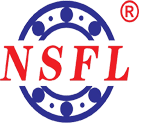22
2025
-
06
Understanding Self-Aligning Ball Bearings: A Key Component in Industrial Applications
Self-aligning ball bearings are a specialized type of rolling-element bearing designed to accommodate misalignment between the shaft and the housing. This feature is particularly beneficial in applications where the alignment may shift due to operational stresses or thermal expansion. The self-aligning design consists of two rows of balls and a common spherical raceway in the outer ring, allowing
One of the primary advantages of self-aligning ball bearings is their ability to handle misalignment. In many industrial settings, equipment can undergo significant changes in load and temperature during operation, which may lead to misalignment over time. Traditional bearings often struggle to cope with such variations, resulting in premature failure. In contrast, self-aligning ball bearings can compensate for these misalignments, thus extending the life of both the bearing and the entire assembly.
Another noteworthy feature of self-aligning ball bearings is their capacity to carry radial loads and moderate axial loads in both directions. This dual-load capability makes them versatile for use in various applications, including agricultural machinery, conveyor systems, and industrial fans. When selecting a bearing for a specific application, it's essential to consider the load requirements, as this will directly impact the bearing's performance and longevity.
Self-aligning ball bearings are also known for their low friction characteristics, which helps improve the overall energy efficiency of the machinery in which they are installed. Lower friction leads to reduced heat generation, which can be crucial in maintaining the optimal operating temperature of the equipment. Moreover, these bearings can contribute to lower energy consumption, which is an increasingly important consideration in today's industrial landscape.
Maintenance is another critical aspect of self-aligning ball bearings. While they are designed for robustness and durability, regular inspection and lubrication are vital to ensure optimal performance. Proper lubrication reduces wear and tear, minimizing the risk of failure and costly downtime. Operators should follow the manufacturer's recommendations for lubrication intervals and techniques to maximize the benefits of these bearings.
In conclusion, self-aligning ball bearings are an invaluable component in various industrial applications. Their ability to accommodate misalignment, carry dual loads, and offer low friction makes them an excellent choice for enhancing operational efficiency and equipment lifespan. Understanding the features and maintenance of self-aligning ball bearings can significantly contribute to the reliability and performance of industrial machinery.
10% DISCOUNT FOR NEW CUSTOMERS

WhatsApp:+8613211157555
Tel: +8613211157555
Address:Room 1106, 11th Floor, No. 23, Fengshan West Road, Jinbang Community, Daliang Street, Shunde District, Foshan City, Guangdong Province
Copyright 2025 Schaeffler (Guangdong) Transmission Technology Co., Ltd. SEO Business license




